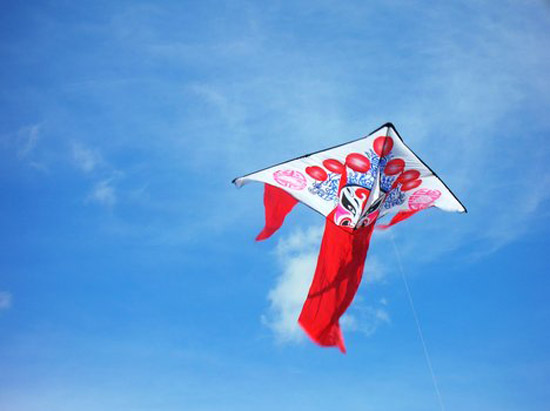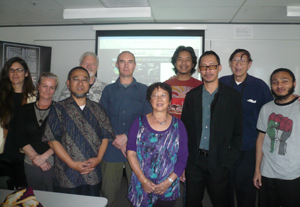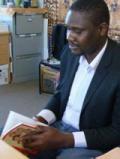
Myles Idoko Ojabo
Documentaries have a positive impact on democracies by telling stories with impact and insight, says Indonesian filmmaker Bayu Sampurno, who has spent the past two decades in the TV and film industry.
Speaking at an introductory documentary making workshop organised by the Chinese New Zealand Oral History Foundation in association with the Pacific Media Centre, he challenged community and student participants to define: “What is documentary?” Documentary to some people would not appear as news, he said in response to suggestions from participants.
Documentary to some people would not appear as news, he said in response to suggestions from participants.
To others, only the Discovery Channel would come to mind with programmes about the world of animals, water bodies and nature.
Sampurno showed the workshop a video which was described by most participants as an advertisement about the “comfort and service” of an airline.
But he surprised the audience by also describing it as a documentary.
Sampurno agreed with definitions that classified documentaries as “films”. He also agreed that a documentary meant “presenting life as it is”. He saw documentary as a creative treatment of actuality.
Various genres
Summing up, he described documentary as anything captured by a camera.
Sampurno spoke also about the various genres of documentary, including docudrama, docufiction, and mockumentary.
He gave as examples of docudrama such as actress Julia Roberts as Erin Brockovich, A Life Misunderestimated, and The Social Network, were movies/documentaries he described as docudramas. Previously docudrama had been thought of as true stories that were dramatised.
Docufiction included programmes such as I Shouldn’t be Alive and Supervolcano. Based on true stories, the characters who had really been in the true-life events would be involved - and in some cases interviewed - as the story unfolds, although they may be replaced by actors/actresses to act in some incidences.
The mockumentary genre included The Blair Witch Project, Borat and Paranormal Activity, which were visual documentaries although fiction.
Sampurno talked about the strategies involved in creating a story, purpose and category in the making of a documentary. He provided a wealth of information about cameras and equipment needed, scripting and creating storyboards and the technical process of making a documentary.
David Wong, president of the Chinese NZ Oral History Foundation, welcomed the introductory workshop, saying he hoped that it would lead to others to develop a video component to the audio histories his researchers were compiling.
“The foundation had completed its first project of ‘21 Voices’ - 21 Poll Tax descendants who had been interviewed and recorded,” he said.
“Hard-copies of the abstracts and photos have been deposited at the Alexander Turnbull Library in Wellington and the Auckland City Library.
“The interviews can be listened to at the libraries.”
Myles Idoko Ojabo is a postgraduate student in the School of Communication Studies and currently a volunteer with the Pacific Media Centre.
More information



